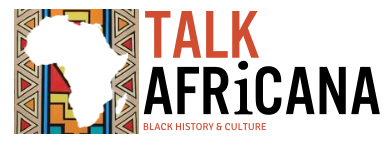Abdul Rahman Ibrahima was a Fulani prince from the Fouta Djallon region of Guinea, who was captured and sold into slavery in 1788. After spending 40 years enslaved in the United States, he was freed in 1828 and returned to Africa.

Abdul Rahman Ibrahima was born in 1762 in Timbuktu, a city renowned for its rich history and culture in West Africa. As the son of Almami Ibrahima Sori, the Fula leader of the Imamate of Futa Jallon in what is now Guinea, he grew up in a privileged environment, receiving an education in madrasas and mastering several African languages, in addition to Arabic. With his father being a prominent ruler, Abdul Rahman’s destiny seemed secure. On returning to his homeland in 1781, he got married, fathered a child and joined his father’s army.
However, fate took a cruel turn in 1788 when Abdul Rahman Ibrahima, leading a cavalry campaign, was ambushed and captured. He was sold to European slave merchants, marking the beginning of a long and arduous journey through the transatlantic slave trade. Like millions of Africans forcibly taken from their homes, he endured the horrors of the Middle Passage and arrived in the United States, where he was sold into slavery in Natchez, Mississippi.
His enslavement led him to the plantation of Thomas Foster, a man who initially knew little about cotton farming.
Abdul Rahman’s expertise in cotton cultivation from his hometown in Fouta Djallon proved invaluable to Foster, and he quickly became the region’s leading cotton producers. Abdul also also helped in the managing of his cattle and also supervising other slaves. Despite his enslavement, Abdul Rahman married Isabella, another slave on the plantation, and together, they had nine children.

The turning point in Abdul Rahman’s life came in 1807 when he encountered an old acquaintance, Dr. John Coates Cox, who recognized him from their previous encounter in Africa.
In the 1780s, Abdul had rescued an injured Cox along the West African coast, nursed him to health and also housed him for six months before escorting him back to the coast to find transport home.
Recognizing each other at the market, the two men greeted, and after catching up, Cox followed him home. On meeting his master, Cox offered to buy him for $1000, so the man could return home to Africa, but Foster refused to sell as Abdul Rahman was indispensable to his plantation.
Cox persisted in his efforts until his death in 1816, leaving Abdul Rahman without a clear path to freedom.
In 1826, at the suggestion of a local newspaperman, Abdul wrote a letter in Arabic to his family in Africa detailing his life since being enslaved. Although the letter did not reach his family, it found its way to Sultan Abderrahmane II of Morocco, who intervened on Abdul Rahman’s behalf. The Sultan urged U.S. President John Quincy Adams and Secretary of State Henry Clay to secure Abdul Rahman’s release, offering to exchange him for American prisoners held in Morocco.
Following this intervention, Thomas Foster finally agreed in 1828 to release Abdul Rahman without payment, he also freed his wife at a discounted fee of $200, but he kept all their children and grand children.
Abdul Rahman and Isabella, however, faced a heart-wrenching dilemma. They could not leave the U.S. without their children, and they lacked the funds to buy their freedom. Determined to secure their children’s liberation, Abdul Rahman and Isabella embarked on a fundraising tour across various U.S. cities, seeking donations and support from the American Colonization Society and politicians.
Despite their efforts, Abdul Rahman and Isabella were only able to raised $4000 of the estimated $10,000 needed to free their children and grandchildren. Fearing re-enslavement by Foster, the couple made a difficult decision and left for Liberia without their family in February 1829. Their journey to Liberia was supported by the American Colonization Society.
Abdul rahman never got to see his hometown of Fouta Djallon or his children again as he died within four months after arriving in Liberia, at the age of 67.
The funds he and his wife raised only ended up buying the freedom of two of their sons and their families, they too journeyed to Liberia to reunite with their mother Isabella.
In the year of Abdul Rahman’s death, Thomas Foster also passed away. Upon Foster’s death, his estate, which included the enslaved children and grandchildren of Abdul Rahman who had not been freed, was divided among his heirs. This heartrending event further compounded the plight of those who remained in bondage, adding to the sorrowful legacy of the transatlantic slave trade.


I love to learn from the from the pass